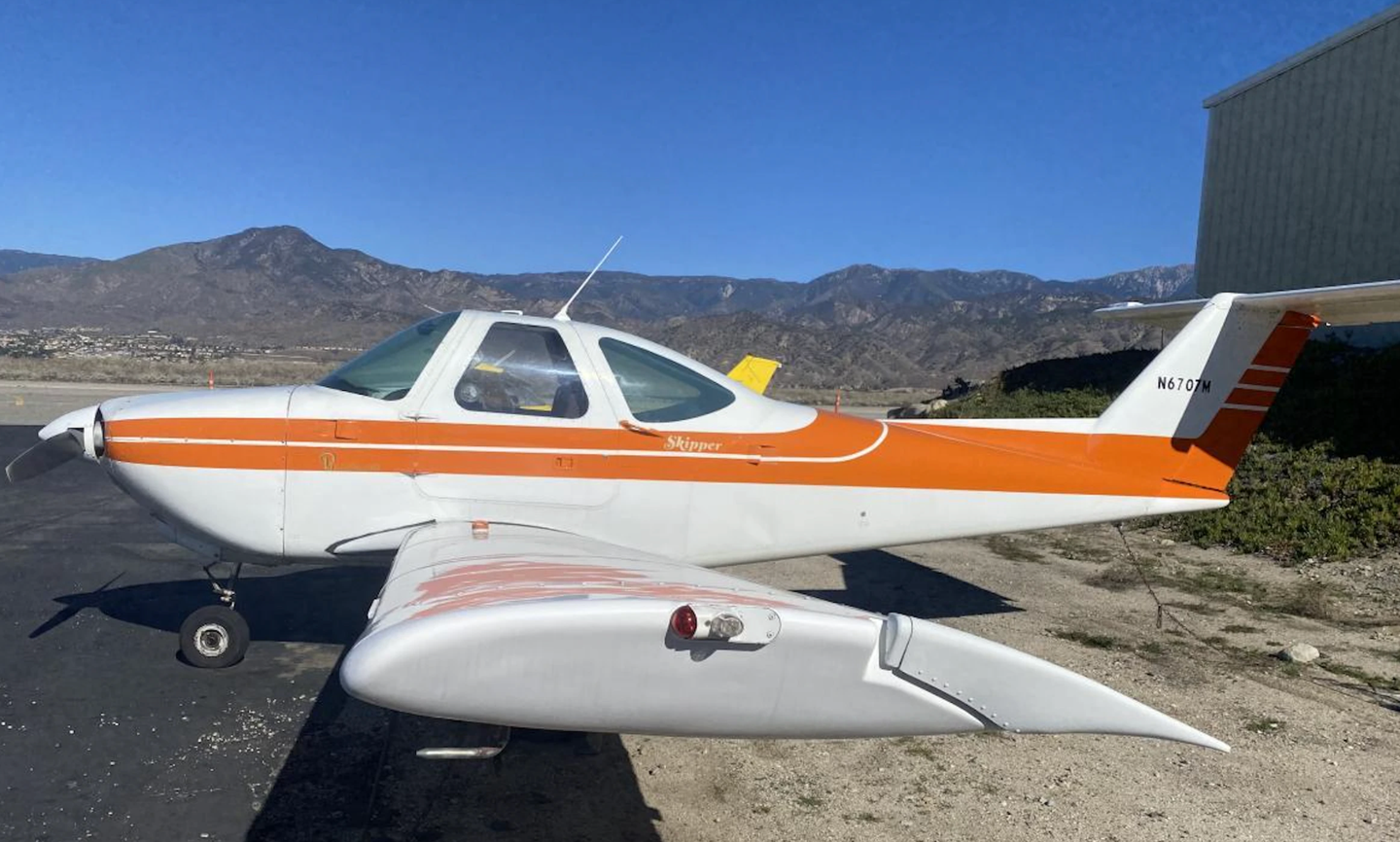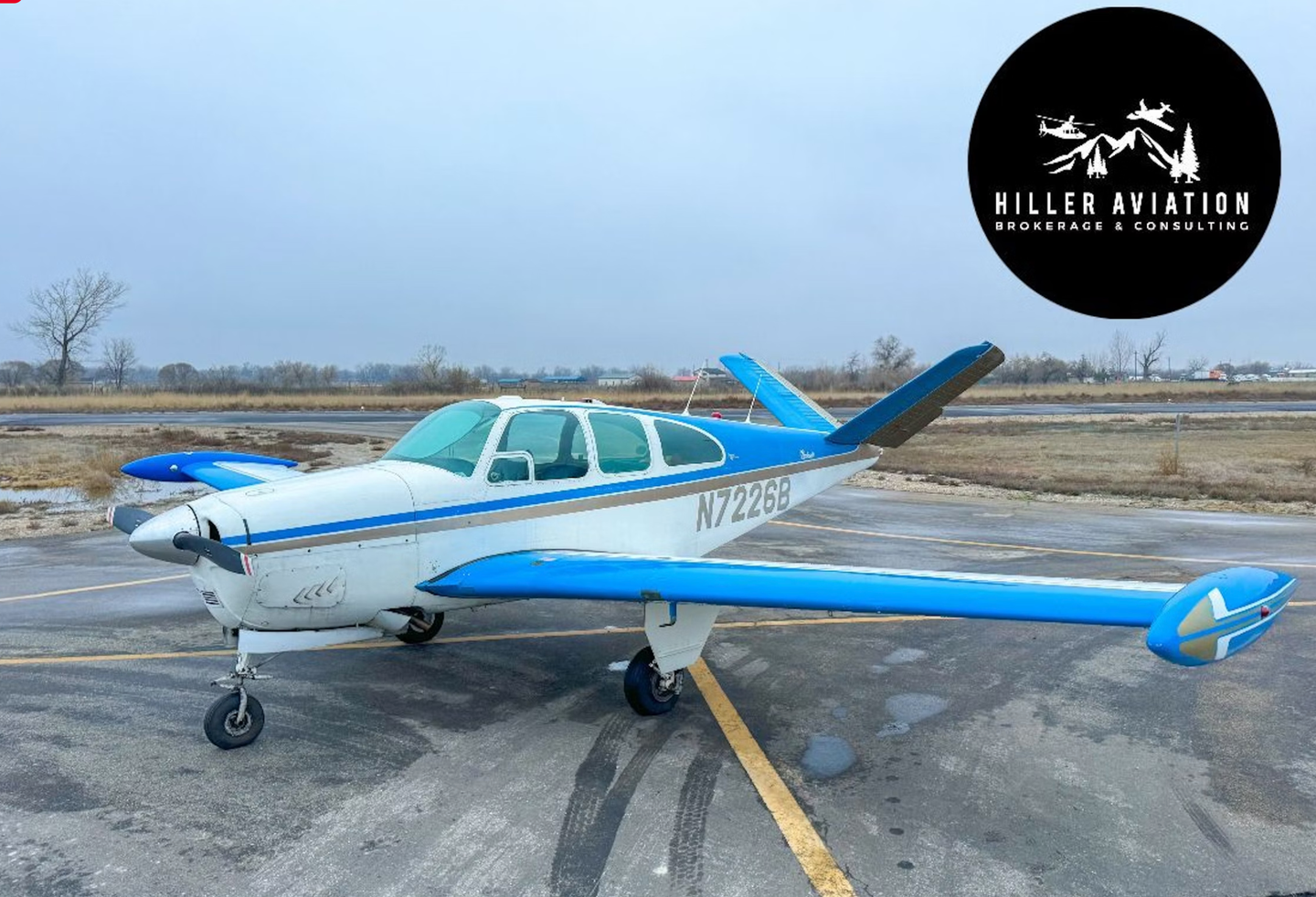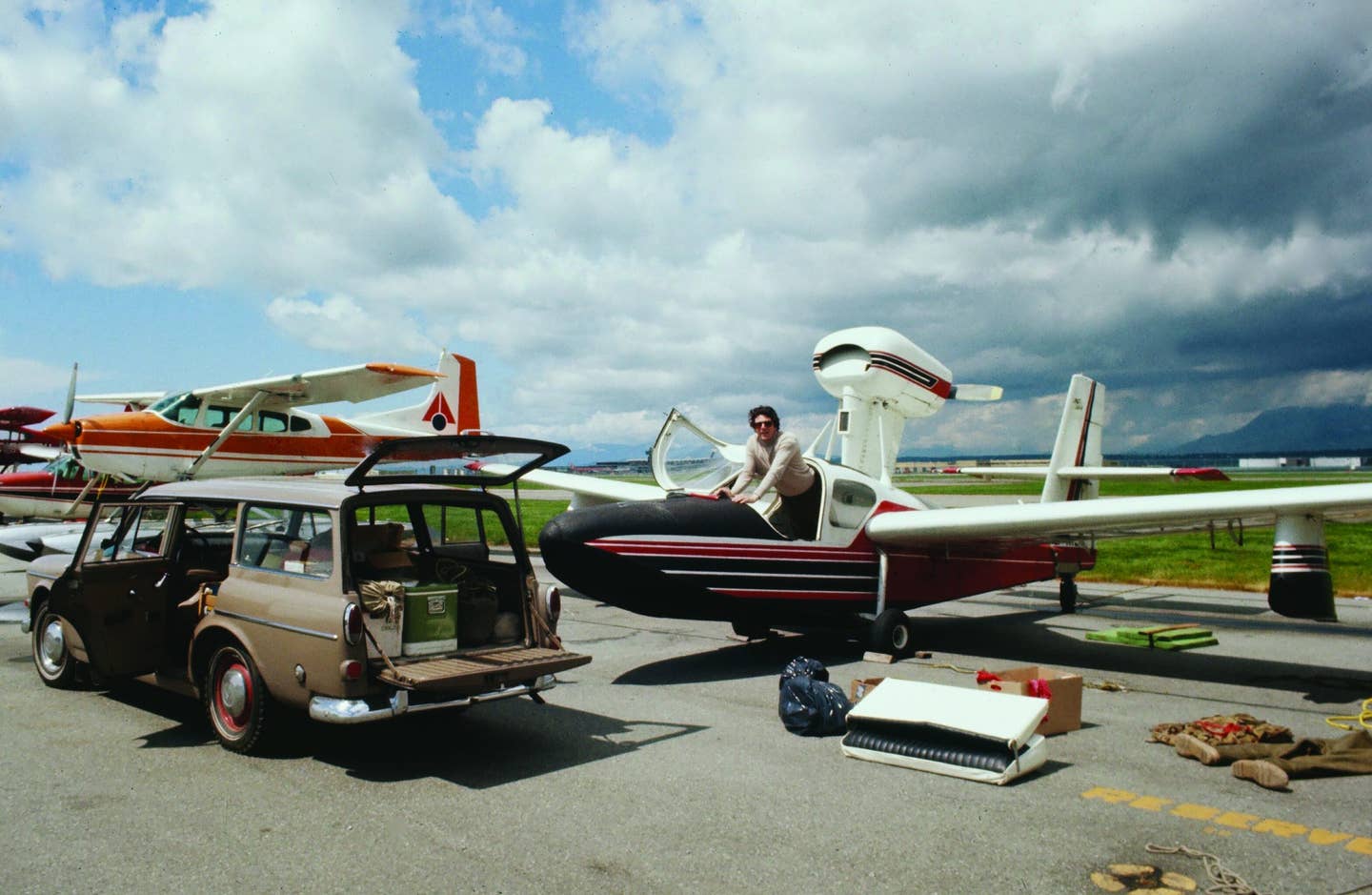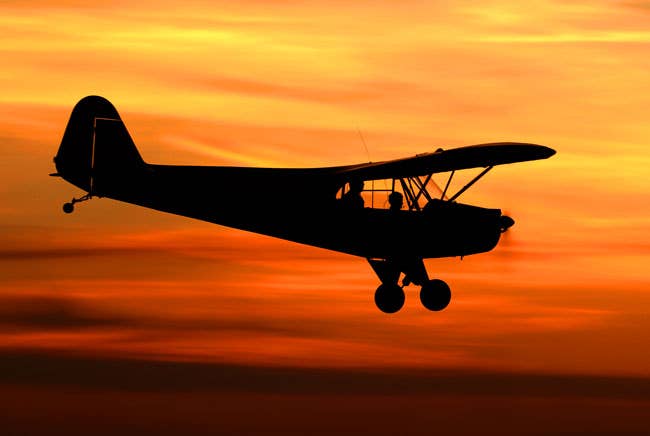Cougar Baron: Most Happy Baron
Rocket engineering offers the world’s most enthusiastic Baron
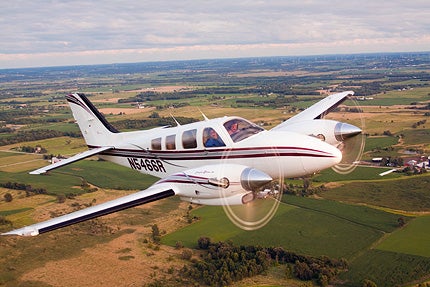
|
In the world of corporate turboprops, 300 knots is something of a holy grail. Three hundred knots begins to intrude on jet country. Not many jetprops will manage such speed: the MU2, Cheyenne 400, Commander 1000 and perhaps one or two others.
Adding an STC'd conversion to the mix might seem like cheating, analogous to matching a full-race Porsche 935 against a group of stock 911s. Still, Darwin Conrad of Rocket Engineering (www.rocketengineering.com) in Spokane, Wash., has introduced a turbine-powered 58P Baron, and it does indeed nudge into the 300-knot club.
Conrad calls his modified Baron "the Cougar," and it's basically a 58P converted straight across with a pair of 500 shp P&W PT6A-21 turbine engines with fully reversible, four-bladed Hartzell props. The PT6A family of turbines is indisputably the world's most renowned, with more than 36,000 in service in 170 countries. Included in the bargain are a pair of 200-amp generators and two 24-volt batteries.
The Cougar is the fourth in Conrad's chain of P&W PT6A conversions. The other three are the Malibu Jetprop (a Piper Malibu/Mirage), the Turbine Air (Beech B36TC) and the Royal Turbine (Beech Duke). The new airplane employs the same engines used on the other three conversions.
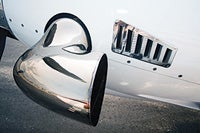 | .jpg) |
| The Cougar Baron is a converted 58P that's powered by a pair of 500 shp P&W PT6A-21 turbine engines, offering a total of 1,000 hp, and a four-bladed Hartzell propeller. |
Beech built about 500 pressurized Barons between 1976 and 1986, each with a pair of Continental TSIO-520s under the cowls. The 58P was an enthusiastic little twin, capable of an honest 210 to 220 knots, depending on which model you purchased (engine power varied between 310 and 325 hp).
I caught up with Conrad at EAA AirVenture 2009, and arranged to fly the prototype Cougar out of nearby Appleton Airport. This was the one and only flight-test article, and Conrad was halfway through testing for the STC award from the FAA. Conrad hopes to have full approval later this year.
Any time you boost horsepower by more than 50% (in this case, from 310/325 to 500), you can expect some major performance improvements, and that's exactly what happened to the P-Baron we all knew and loved. Under the Rocket Engineering banner, the plane has undergone a dramatic transformation in personality while retaining the Baron's gentle handling and endearing disposition.
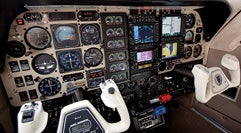 |
Externally, there doesn't appear to be much difference between the two airplanes. As with most PT6A installations, the Pratts are installed backwards in the nacelles. This places the power section at the front of the nacelle, where it can drive the propeller directly, without the need of a long driveshaft. Intake air is admitted through an inlet at the bottom cowl, and the twin exhaust stacks are mounted high on the sides of each engine. Aside from the Pratts, the configuration of the Cougar remains identical to the original Beech model.
Turbine engines always are lighter than piston mills, and the Cougar picks up 150 pounds of useful load per side in the transition from Continental to Pratt & Whitney. On the downside, turbines burn more fuel, and the Cougar adds 36 gallons' more jet fuel to capacity, bringing the total to 222 gallons (1,487 pounds). Despite the extra fuel, the bottom line is a slight gain in payload, an additional 59 pounds.
As you might imagine, the panel has undergone a major transformation with igniters, fuel pumps, starters and generators mounted by twos down the left side. Engine instruments are modified to turbine standards, but flight instrumentation remains roughly the same. The test airplane sported a payload of 563 pounds with full tanks, three folks plus baggage.
.jpg) |
That's exactly what we had in the airplane for our first of two flights---me in the left front, Conrad at right front and pilot Peggy in the right rear executive bucket. Rear passengers board via a left rear side door that provides easy access to the aft cabin.
Despite the fact that the 58P uses the same fuselage as the 36 Bonanza---only 42 inches wide---it's surprisingly comfortable. I've had the privilege of delivering a trio of 58s across various oceans, and the plane is universally a smooth riding machine: stable, willing and easy to fly.
When you bring the Cougar's warp core online for takeoff, the airplane responds appropriately, almost as if it's entering another dimension. Remember, you're unleashing 1,000 hp to propel only 6,200 pounds of airplane. That's 6.2 lbs./hp---better than virtually anything in or out of the class. (Even the Extra 330 unlimited aerobatic airplane manages only 7 lbs./hp.)
The Cougar comes off the ground in as little as 800 feet, and climbs as if it's being shot at. Once the airplane is cleaned up and accelerated to 130 knots, you can expect to see the VSI swing around to 3,500 fpm or better, depending on load. Conrad claims he has been able to launch from the company's headquarters at Felts Field (at an elevation of about 2,000 feet), near Spokane, and level at 25,000 feet nine minutes later, ATC willing.
.jpg) |
Our flight didn't demand such heights---just as well, it turned out. One slight limitation of the Cougar is the pressurization system. Differential is only 3.9 psi, an inevitable consequence of trying to pressurize a cabin that was never designed for it. In essence, you're trying to inflate a box.
This was the same problem Cessna faced when attempting to upgrade the 210 Centurion and 337 Skymaster. The result was an even lower 3.37 psi differential. Additionally, remember that even the newest 58P is nearly a quarter-century old, so minor pressurization leaks could be a problem on even the best-maintained airplane.
The 3.9-pound Garrett pressurization system may have been adequate on the Beech piston twin that rarely lofted much above 22,000 feet, but it's a little weak for a turboprop that needs to cruise in the mid-20s to achieve its best speed and fuel economy. Higher always is better for turbines. The pressurization system provides a 10,000-foot cabin at 22,000 feet. That means the cabin will be near the 12,500-foot limit at an altitude of 25,000 feet. Conrad hopes to certify the Cougar for 26,000 feet to take better advantage of the turbine's high-altitude capability. Supplemental O2 will be required at that height.
By coincidence, FL220/230 is the height where the airplane logs its quickest cruise, right at 300 knots. (Rocket Engineering plans to offer Colemill Foxstar composite winglets, which increase cruise by six knots, for an extra $10,000.) Fuel burn is 33 gph per engine, 66 gph total. Do the math with the original's 220 knots on 38 gph, and you can see mileage is only reduced by roughly 1 nmpg on the turbine conversion. That's a small price to pay for cruising at near-jet speeds well above most of the piston traffic. In other words, you can fly very fast but not very far, or moderately fast and farther.
If you're in a little less of a hurry, you can ease back on the thrust to consume 45 gph, and still manage to speed along at 250 knots. At this burn rate, you easily can manage four hours of endurance for nearly a 1,000 nm range.
Of course, pure, unbridled speed wasn't the only goal of the Cougar. PT6A engines are phenomenally smooth, as they develop power with turbines that rotate at high speed (typically, 37,000 rpm) rather than multiple pistons that slam up and down. The PT6A series is the most popular turbine engine in the world, and it's certified on nearly 100 models.
Replacing the Baron's Continentals with Pratts boosts TBO from 1,600 to 3,600 hours, a major incentive all by itself. Turbines are inherently more reliable than pistons, and though you do pay for that reliability, some pilots feel the security and safety are worth the price.
Further, in addition to the obvious boost to multi-engine climb performance, single-engine climb nearly sextuples from 270 fpm to about 1,800 fpm, providing a more comfortable hedge in the event that one mill goes to sleep. Conrad hasn't pinned down the exact SE spec at this writing, but he suggests single-engine climb performance will be so good that it will no longer be a safety concern for single-engine operation.
It doesn't require a brain surgeon to figure who Conrad's market will be. Though several VLJ manufacturers have attempted to market small jets around $1 million, no one has even come close, and the economics involved make it unlikely anyone ever will. If Cirrus can bring its Vision jet to market at the proposed $1.7 million, that may wind up being the industry's least costly jet. (The Diamond D-Jet now is up to $1.9 million, and all indications are that the PiperJet will cost well over $2 million.)
Conrad hopes to sell his conversion for $895,000 with new engines, and $795,000 with 1,000-hour-or-less warranteed "takeoff" engines. You can buy midgeneration 58P Barons for between $200,000 and $250,000. That's a total of around $1.05 million, a half million less than the least expensive VLJ (assuming the price holds). What else is in the $1.05 million range these days? A new Piper Mirage, a brother-in-law price on a new, normally aspirated Beech 58 Baron, and that's about it among new aircraft.
Okay, we know we're comparing apples to grapefruits---a new airplane to a 30-year-old, former-piston-engine conversion. It's obvious the VLJs will have higher pressurization differentials and more modern systems than the Baron. The question is: How much are you willing to spend for those benefits if performance is roughly the same?
In the airplane business, there's a mentality that some buyers will never purchase a used aircraft, much less a used conversion. As someone who has owned six airplanes over the last 45 years---only one of which I bought new---I don't agree. My current LoPresti Mooney is a highly modified Executive, and it's unquestionably the best airplane I've owned.
Certainly, if money was no object, I'd probably own a dozen or more flying machines, with a Gulfstream 550 for long-distance travel, an Aerostar 700 for shorter-range trips, an Extra 330 for fun, a Seawind for the water, a Jet Ranger for helicoptering, etc. If you need to operate on a million-dollar budget, however, and your missions are mostly straight line, it may be difficult to beat the Rocket Engineering Cougar.
| Your Photo In Plane & Pilot! Log on to Favorite Flying Destinations and submit your best photos and stories for a chance to be published in an upcoming issue |
| Share Your Favorite Flying Destinations! Post hot spots, photos and flying tips on our new online gallery. Click over to "Favorite Flying Destinations" at planeandpilotmag.com
|

Subscribe to Our Newsletter
Get the latest Plane & Pilot Magazine stories delivered directly to your inbox

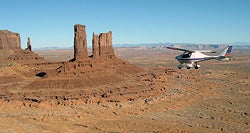 Monument Valley, Utah/Arizona
Monument Valley, Utah/Arizona
